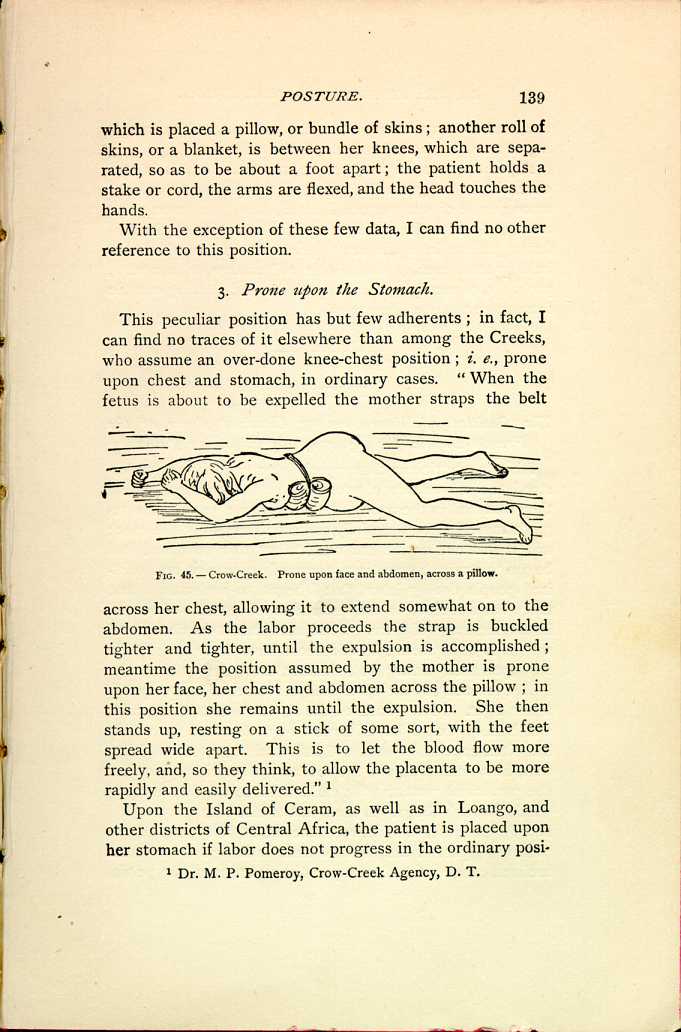| CHAPTER II.
POSTURE IN LABOR. Labor Among Primitive Peoples | ||
3. Prone upon the Stomach.
This peculiar position has but few adherents; in fact, I
can find no traces of it elsewhere than among the Creeks,
who assume an over-done knee-chest position; i. e., prone
upon chest and stomach, in ordinary cases. "When the
fetus is about to be expelled the mother straps the belt

FIG. 45.—Crow-Creek. Prone upon face and abdomen, across a
pillow.
[Description: Woman lies face-down on the floor with her hands above her
head. A bundled cloth is bound above her abdomen. Black and white
illustration.]
Upon the Island of Ceram, as well as in Loango, and other districts of Central Africa, the patient is placed upon her stomach if labor does not progress in the ordinary position,
A peculiar custom may yet be mentioned which is still observed, to the great discomfort of the parturient woman, among some of our western Indians, as well as among the more civilized natives of Syria; and that is, to toss the suffering patient in a blanket, the four corners of which are held by stout men, so that she is well shaken, with a view, probably, of rectifying the malposition, and shaking out the fetus from the unwilling womb.
| CHAPTER II.
POSTURE IN LABOR. Labor Among Primitive Peoples | ||